
ABSTRACT
It is critical that bovine maternal colostrum is fed to newborn calves during their first hours of life. Colostrum is the secretion a cow produces after mammary involution that is rich in various nutrients. In addition to the nutritive value for newborn calves, immunoglobulins are of interest due to their role in developing the naïve immune system of calves at birth. The process by which a calf acquires immunity via absorption of immunoglobulins is defined as passive immunity. When calves consume an adequate amount of immunoglobulins, they are classified as having successful passive immunity (SPI). In contrast, if they are deprived of adequate colostrum, they are considered to have had a failure of transfer of passive immunity (FPI). Transfer of passive immunity is assessed by measuring serum IgG concentrations at 24 to 48 h of age. The major factors that influence whether a calf has SPI or FPI are colostrum IgG concentration, quantity fed, and age of calf at colostrum feeding. Monitoring apparent efficiency of immunoglobulin absorption in calves is often recommended to evaluate overall colostrum management practices. Serum IgG analyses can be determined with direct (radial immunodiffusion) or indirect (refractometry) methods and used to assess SPI or FPI prevalence.
Graphical Abstract

INTRODUCTION
Research into passive transfer of immunity started between 1892 and 1893 with work by Paul Ehrlich, who studied how maternal antibodies were transferred to newborn animals. Ehrlich was the first to differentiate between active and passive immunity. At birth, calves can absorb immunoglobulins from maternal colostrum through their small intestine, but the closure of intestinal permeability to those proteins accelerates as calf age exceeds 12 h after birth, and permeability ceases completely at 24 h postpartum. This was corroborated by bush and staley who stated that cessation of IgG absorption from epithelial cells to the bloodstream increases after 12 h of age with final closure at 24 h. Gut closure is defined when the gut is unable to absorb macromolecules and transfer them into blood circulation. Early research stated that diet did not affect gut closure, but discussed how feeding colostrum hastened cessation and that colostrum-deprived calves experienced delayed gut closure. Moreover, explained that colostrum feeding stimulates pinocytosis, which is the means of transport of immunoglobulins. Macromolecule absorption begins to shut down after that, although transport into the bloodstream is still active. Additionally, reported that gut closure in calves is a mechanism for minimizing macromolecule absorption after colostrum ingestion. The exact mechanism controlling this permeability is not clear; however, this gut closure is believed to be the result of the depletion of pinocytotic activity or the replacement of enterocytes with mature epithelial cells. Furthermore, it has been shown that absorption efficiency decreases as the time between birth and first colostrum feeding increases, making the timing of colostrum offering to a newborn calf crucial. More recently, reported that a delay in colostrum feeding past 6 h after birth decreased transfer of IgG in comparison with calves fed right after birth, corroborating that calves should be fed immediately after birth. However, data show that calves are able to absorb IgG when deprived from colostrum feeding up to 48 h. Specifically, when colostrum is first fed at 6, 12, 24, 36, and 48 h after birth, 65.8, 46.9, 11.5, 6.7, and 6.0%of total ingested IgG, respectively, appeared in plasma. Recently, reported that calves fed within 1, 1 to 6, 6 to 12, and 12 to 18 h after birth have apparent efficiency of absorption (AEA) values of 30.5, 27.4, 23.7, and 15.8%, respectively. Another factor that has been demonstrated to influence how the small intestine matures or closes is IGF-1. Although its role in gut maturation has not been clearly characterized, it is known that IGF-1 is present in large quantities in maternal colostrum and is one of the 2 most abundant growth factors present in colostrum along with IGF-2 at levels of 50 to 2,000 μg/L hypothesized that colostrum intake might influence gut development by elevating serum IGF-1 concentrations. However, concluded that feeding colostrum for 3 d minimally increased serum IGF-1. In addition, concluded that the increase in IGF-1 concentrations was more likely related to the increased amount of energy and nutrient consumption from colostrum, rather than by gut development. In addition to timing, the major factors that affect colostral immunoglobulin absorption are immunoglobulin concentration in colostrum, total volume of colostrum offered at first feeding, and thus the total grams of immunoglobulins consumed, and bacterial levels in colostrum. Although it is common that research studies emphasize IgG concentration as one of the major elements in colostrum quality should be included as its presence in colostrum has potential negative effects on newborn calves. Heat treatment of colostrum can enhance IgG absorption and increase plasma IgG concentration by 18.4% while being an excellent method to reduce bacteria populations in colostrum. Nevertheless, it should be considered that heat treatment be rigorously controlled, as its duration can affect high and low abundance proteins in bovine colostrum mentioned that changes in the teome could affect calf development when the bioactive components are reduced. However, no data has been reported that show negative calf effects from feeding heat-treated colostrum. It has been reported that heating colostrum at 60°C for 30 or 60 min minimally decreases or does not affect IgG concentration, reduces bacterial count, and does not affect viscosity.
Colostrum, or first milk produced by the mother after birth, is high in nutrients and antibodies. A newborn calf lacks disease protection because antibodies do not pass across the cow’s placenta to the fetus’ circulatory system. Antibodies in colostrum provide calves with their initial protection.
Calves need about two quarts of colostrum (or at least five percent of the calf’s body weight) within four hours of birth – ideally within 30 minutes – and one gallon within 12 hours.
Time is important because a newborn calf’s digestive tract allows antibodies to pass directly into the blood. After 24 hours, the calf’s intestines cannot absorb antibodies intact. The absorbed antibodies protect against systemic invasion by pathogens while antibodies that are not absorbed play an important role in protection against intestinal disease.
Allowing the calf to suckle the dam is the most efficient method of feeding colostrum. However, sometimes this is not possible due to problems with the dam or calf. In cases such as these the calf will need to be fed colostrum. Acquire colostrum by milking the dam as soon as possible after calving or using colostrum that you have previously acquired. Acquired colostrum should be from healthy cows to minimize disease transmission. Cows in at least their third lactation generally provide higher-quality colostrum than heifers. A yellow color and a thick, creamy consistency are good indications of quality.
Colostrum can be stored by freezing in milk cartons or plastic containers. The containers can be easily thawed and mixed with warm water for feeding. Studies have shown rapid defrosting using boiling temperatures destroys a portion of the antibodies. A warm water bath will ensure that antibodies are intact.
You may also want to consider purchasing a commercially available colostrum supplement or replacer if you don’t have ready access to fresh colostrum. Consult your veterinarian on the use of these supplements or replacers.
If u have any questions contact us freely….

Due to the importance of colostrum to the newborn calf it is always a good idea to have some alternative sources of colostrum on hand “just in case” during the calving season.
Here’s a trick for storing colostrum. Use a 1 gallon Ziploc freezer bag. Fill half full (2 qts.) and squeeze the air out before sealing. They lay flat and you have room to store more. When needed, take one out and put in sink of hot water. It thaws and warms up very rapidly and it’s a ready measured feeding. You should date the bag when you store it.
The importance of colostrum
Colostrum is the first milk produced by the dam following calving. It is a rich source of
immunoglobulins, fat (energy), vitamins and minerals. The major role of colostrum is to
passively transfer immunity from the dam to her calf. Calves are born
agammaglobulinemic, or without any antibodies to protect them against diseases. FPT
occurs when the calf does not receive this passive immunity.
Newborn calves are dependent on the ingestion and absorption of colostral
immunoglobulins for immunity from diseases early in life. Newborn calves are especially
susceptible to calf scours, diarrhea occurring during their first month of life, which has a
variety of bacterial and viral causes. The quality of colostrum can be affected by the dam’s
age, vaccination and health status. Colostrum from an older cow is usually of higher
volume and better quality than that from a younger cow or heifer. It is tan to yellow in
color, and should be thick and creamy. The quality of colostrum from beef cows also
tends to be higher than that from dairy cows. Colostrum quality can be estimated using a
colostrometer, which measures the specific gravity of the colostrum. Colostrum containing
over 50 g of Ig/L is considered to be of good quality.
Managing calves at risk for FPT
The best defense against FPT is good colostrum management, ensuring that each calf
receives an adequate amount of good-quality colostrum shortly after birth. Ideally,
newborn calves stand and suckle shortly after birth. However, several factors, such as
dystocia, a weak or chilled calf, adverse weather conditions, or an inattentive mama can
delay or prevent the newborn calf from nursing. If you suspect a calf has not nursed, or if
the calf is at high-risk for not nursing, it’s a good idea to intervene and provide it with
colostrum.
There are several options for providing colostrum to the newborn calf. Ideally, the calf
should receive colostrum from its own dam. If possible, restrain the dam in a chute and
help the calf nurse her. If the calf will not or can not suckle, milk the cow out and feed the
calf with an esophageal or tube feeder. While it may take a little more time and effort.
getting the cow in the chute will also allow you to examine her for any teat and udder
conditions that may be contributing to the problem. The next best choice for ensuring
colostrum intake would be to feed colostrum (fresh or frozen) from other cows in the herd.
It’s a good idea to have pooled colostrum from some of your older animals available at the
start of every calving season. Fresh colostrum can only be kept for several days in the
refrigerator until it starts to decline in quality. Frozen colostrum can be stored for 1-2
years and thawed when needed. As a last resort, colostrum from dairies or other cattle
operations can also be used, but should be used with caution. Diseases such as Johne’s
disease, Bovine Leukosis, and salmonellosis can be transmitted through colostrum. If
possible, try to determine the disease status of the herd when obtaining colostrum from an
outside source.
Preventing problems
FPT can cause significant economic losses to the producer through increased calf illness
and death. Ensuring adequate colostral intake can affect calf health and survivability.
Understanding the risk factors that contribute to FPT can help prevent problems from
occurring. Good nutrition is necessary for the dam to produce high-quality colostrum.
Vaccination of cows prior to calving with pathogens causing calf scours has been shown to
reduce the incidence of diarrheal diseases in calves and may be considered in high-risk
herds. Producers experiencing a high number of calves with FPT should contact their herd
veterinarian to help evaluate overall herd immunity and health management practices.
In addition to ensuring adequate immunity in calves, minimizing disease exposure is a
critical component of any herd health program. There are several things producers can do
to minimize the overall disease challenges that calves are exposed to, such as: providing
clean, dry calving areas; cleaning bottles and esophageal feeders between calves; and
avoiding the introduction of new or outside-sourced animals into the calving and nursing
areas. The key to herd health is a combination of maximizing herd immunity, reducing
exposure to pathogens, and practicing good biosecurity. Remember, the first nursing is the
most important meal this calf will take. Make sure it’s a good one.
The best defense against failure of passive transfer (FPT) is
good colostrum management, ensuring that each calf receives
an adequate amount of goodquality colostrum shortly after
birth. Ideally, newborn calves stand and suckle shortly after
birth.
1. Why is colostrum important for newborn dairy calves?
Colostrum provides essential antibodies (immunoglobulins) that help protect the calf from diseases and infections during the first weeks of life.
2. When should a calf receive colostrum?
A calf should receive high-quality colostrum within the first 2 hours after birth for maximum absorption of antibodies.
3. What happens if a calf doesn’t get enough colostrum?
Without enough good-quality colostrum, calves are at higher risk of infections, poor growth, and increased mortality.
“If you have any questions or need any assistance, feel free to contact us. we always happy to help and provide more information. Don’t hesitate to reach out at professionaldvm129@gmail.com. Looking forward to hearing from you soon!”
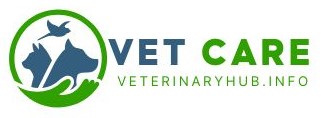
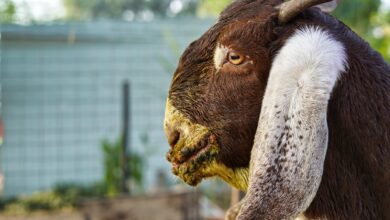
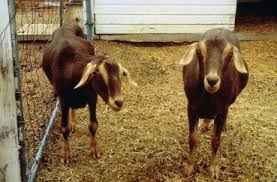
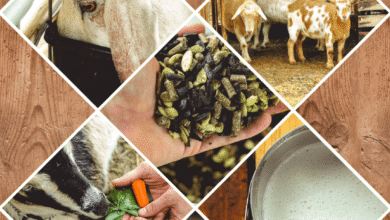
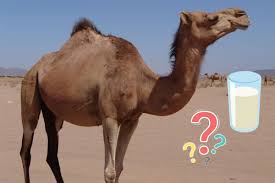
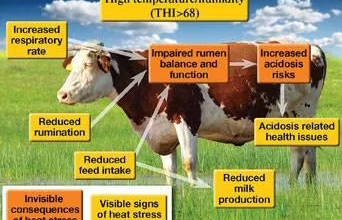
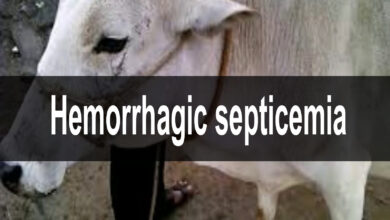
t4zphv
gpd6xn
강남에 이런 힐링 공간이 있다니! 강남토닥이에서 여성전용마사지를 받고 삶이 한결 여유로워졌어요.